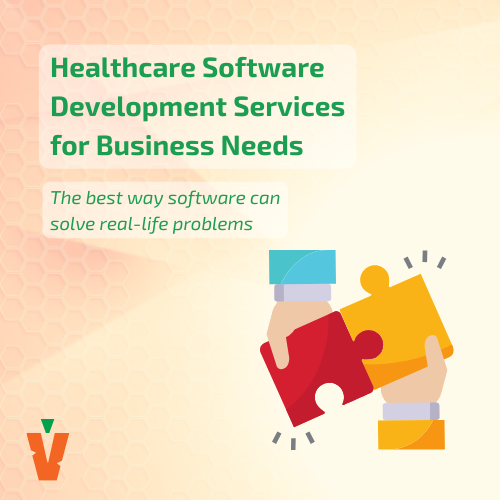Is your big hospital deal requiring an Epic integration to continue doing business with you? Losing a major client due to a lack of preparation isn’t an option, so you must understand what you’re getting into — especially in terms of hospital politics and decision-making.
Otherwise, you’ll be chasing unresponsive leaders for months and redoing your plans to meet needs nobody specified ahead of time.
All too often, we see SaaS companies underprepared for Epic EHR integrations, scrambling to assemble the team and expertise at the final bell — when they can least afford to fail. Here’s everything a healthcare Project Manager should know to get it right.
Who’s Who in Hospital Decision-Making?
While navigating an Epic integration, you’ll collaborate with the hospital where you’re installing your healthcare software solution. That’s because Epic encourages developers to work directly with Community Members instead of acting as a mediator. While this is good news — it lets you tailor the app specifically to a hospital’s needs — it also requires you to get in the good graces of various stakeholders involved in the hospital itself.

In brief, here’s who you should keep in mind and why:
- IT team: Your first point of contact with the hospital. Their primary focus is technical feasibility — ensuring the integration won’t compromise the IT infrastructure. They’re also thinking long-term: does your software need ongoing support, and will it integrate smoothly with other systems? To appease them, provide detailed documentation, case studies, and references from other successful EHR integrations.
- Security team: Given the sensitivity of healthcare data, the security team can make or break the integration process. They’ll scrutinize your SaaS for vulnerabilities that may cause data breaches or non-compliance. They protect patient data and the hospital’s reputation, so expect rigorous security assessments.
- Clinicians: Doctors, nurses, and other healthcare providers are the end-users of your product. Their main concern is how your software will affect their daily routines and, more importantly, patient care. If your integration makes their jobs easier and improves patient outcomes, they’ll be your strongest advocates. However, if it complicates their workflow, it could face resistance.
- Executives: Hospital executives focus on the big picture. They want to know how your healthcare software will contribute to the hospital’s strategic goals, improve patient outcomes, and provide a return on investment. Winning them over means demonstrating the technical capabilities of your product and its potential to drive value. Think in terms of value-based care for the best results.
These groups have differing, sometimes competing priorities that healthcare Project Managers must balance. But there’s one that sits above all — risk reduction.
Risk Reduction as No. 1 Priority
Hospitals are inherently protective and political environments where every new app and vendor represents a potential risk to PHI and patient care. This cautious approach creates friction for SaaS companies who are used to smaller EHR integrations.
Clinicians often recognize the need for new tools to improve care, but the overarching incentive of the hospital is to avoid introducing vulnerabilities at all cost. That’s why it’s your task to present your healthcare software as a high-value, low-risk solution. Here are some ways to do that:
- Involve clinicians in building the software. Clinicians understand the day-to-day needs and pain points of their workflows better than anyone. By requesting and respecting their opinions, you increase your likelihood of a successful integration. At Vitamin, we make sure that user feedback is incorporated at every stage of development to ensure practical, real-world solutions.
- Produce a proactive plan. Develop a risk mitigation strategy before approaching the hospital. Anticipate the concerns of IT and security teams, particularly around PHI, and show your compliance with relevant regulations. Highlight your security features, like encryption, audit trails, or secure data sharing.
- Prove your success. Hospitals want proof that your integration has worked in similar environments. If you have Epic experience, great — highlight it. If not, discuss your integrations with other large EHR systems, like Cerner or Allscripts. Case studies, testimonials, and references go a long way in building trust and reducing perceived risks.
- Monitor the integration. Once you get buy-in, the hospital will likely scrutinize the entire integration process. Provide updates, conduct risk assessments, and address issues as they come up. Transparency and responsiveness will maintain trust and ensure bumps in the road don’t turn into full-blown roadblocks. At Vitamin, we do regular stand-ups and weekly updates for our clients.
Despite your best efforts, the integration process can still be intense, with high levels of scrutiny from many angles. The friction often comes from the hospital’s caution and the political nature of the decision-making. Besides being patient and adaptable, you should structure your team in a way that moves things along more smoothly.
Cross-Functional Relationship Management
Building relationships across hospital departments is key for successful Epic EHR integrations. As a healthcare Project Manager, your ability to connect your team with their counterparts in the hospital — PM to PM, IT to IT, exec to exec— can make all the difference.
When engineers collaborate directly, they can quickly address technical issues. As a PM, aligning with the hospital’s Project Manager ensures that both teams stay on track and manage expectations. Strong executive relationships reduce political challenges and secure buy-in.
Prioritize these cross-functional relationships by organizing meetings with counterparts from both organizations. This approach helps you manage bottlenecks more efficiently since there will always be somebody in the room who can relate to the other side.
A Real-World Scenario
During our eight years in the industry, we’ve seen both positive and negative examples of team structure impacting the progress of a project. We’ve seen companies where the executive would enter every call to firefight when they started integrating with enterprise customers. And we’ve witnessed the damage that having a top decision-maker in such a stressful, busy position can cause to a company’s progress.
This taught us an important lesson: having a well-structured team that can manage these relationships is just as important as the technical aspects of Epic integrations. Without the right people in the room, you risk wasting time and putting unnecessary pressure on key players.
One lesson came from our collaboration with another client, this time a big-name hospital that came with plenty of bureaucracy. Their team conducted an extensive security audit on us, resulting in a lengthy list of items for us to address. Most were reasonable, but one item was non-essential and very expensive. Despite this, the hospital’s internal politics made it seem mandatory.
A strong relationship made all the difference. When the non-essential item came up, our CISO intervened and explained that it wasn’t crucial for the project delivery. Because of the trust and rapport he built, what could’ve been a costly issue was resolved in no time.
Tips for Handling High-Friction Situations
Even with extensive prep work, political and operational roadblocks often arise during an EHR integration with a large hospital. Common issues include non-responsive stakeholders, differing departmental priorities, and shifting hospital needs that cause delays. The key isn’t to prevent these issues — that’s pretty much impossible given how much hospital stakeholders have on their plates — but to know how to act to keep the project on track.
First and foremost, it’s important to adjust your attitude. Don’t take friction personally, but find what lies beyond the complaints and devise a plan to adapt to the true concerns.
One common problem is dealing with slow-to-respond stakeholders. Key decision-makers may be late with approvals or provide necessary feedback, leaving your project in limbo. To overcome this, keep communication channels open and follow up regularly — while staying polite and patient.
Tip: Set up recurring check-ins with defined agendas and next steps. Ensure all key stakeholders have visibility into progress updates and task ownership by using the same project management tool as the client and providing access to your boards.
Conflicting priorities between departments are another source of friction. While IT might focus on securing the system, clinicians are concerned with workflow and usability. These competing interests will delay progress unless you can adapt to each group's needs.
Tip: When preparing for discussions, focus on the hospital’s most pressing concerns — often security and compliance — while keeping usability in mind. Highlight how your integration enhances security and offer proof that it won’t disrupt clinical workflows.
Sometimes, despite your best efforts, you’ll encounter situations where progress grinds to a halt. Maybe a key decision-maker is unavailable, or there’s miscommunication between teams. Technical issues also crop up, like data compatibility problems during an Epic integration, or a security concern flagged late in the process. Knowing when to escalate issues — and to whom — is the difference between a stalled project and a successful one.
Tip: Find a champion within the hospital’s executive team, someone with the influence to move things forward when necessary. Map out escalation paths based on the type of issue (technical, security, clinical) ahead of time.
Finally, the hospital’s needs and priorities may shift during the Epic EHR integration process. It can happen due to new regulations, budget changes, or leadership transitions. Be prepared to adjust your timelines, features, or overall strategy.
Tip: Build contingency plans into your project timeline. Use rolling invoices tied to deliverables rather than fixed dates, as timelines may shift with unforeseen demands. We found that most successful integration projects take 3–6 months to complete.
Final Thoughts
Understanding hospital politics is necessary for smooth Epic integrations on the enterprise level. By understanding the priorities of different stakeholders, building cross-functional relationships, and proactively addressing concerns, you can minimize roadblocks and keep the project moving forward.
Our tried and tested strategies for healthcare Project Managers will reduce friction and increase your chances of a successful, timely EHR integration.
Need Support for Your Next Integration?
If you're unsure about your project’s viability or how to navigate hospital politics, our team at Vitamin offers a comprehensive Sanity Check. We evaluate your Epic integration project for feasibility, risks, and opportunities.
Having successfully integrated with Epic for several clients, we know the technical and political challenges. Let’s chat, examine your situation, and share success tips.
.png)



.png)